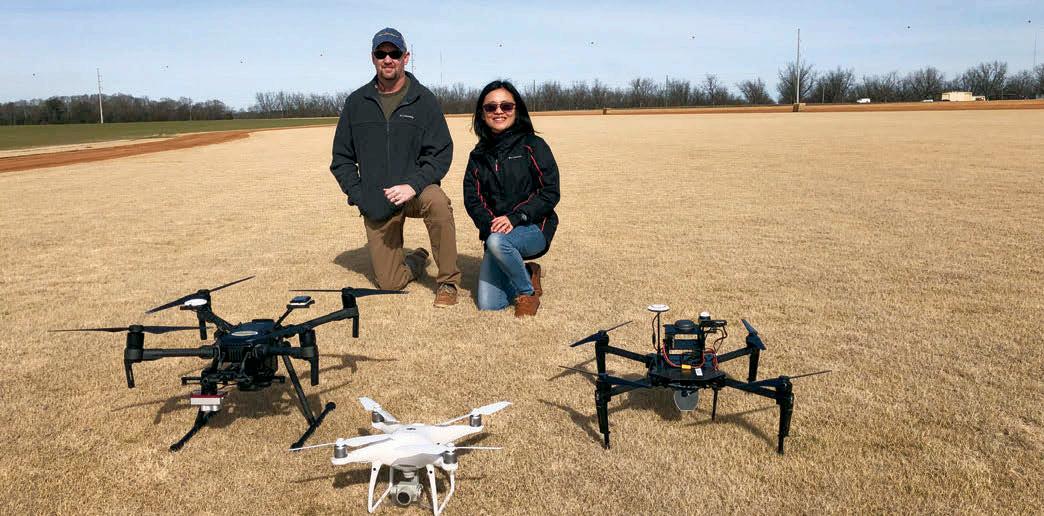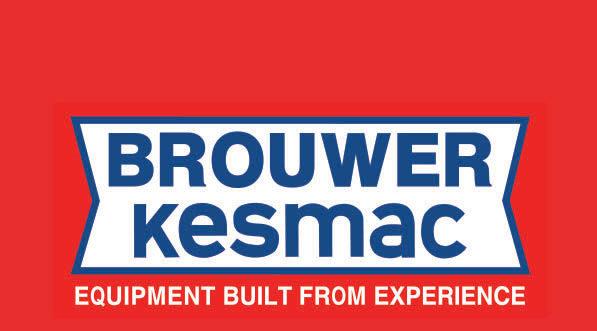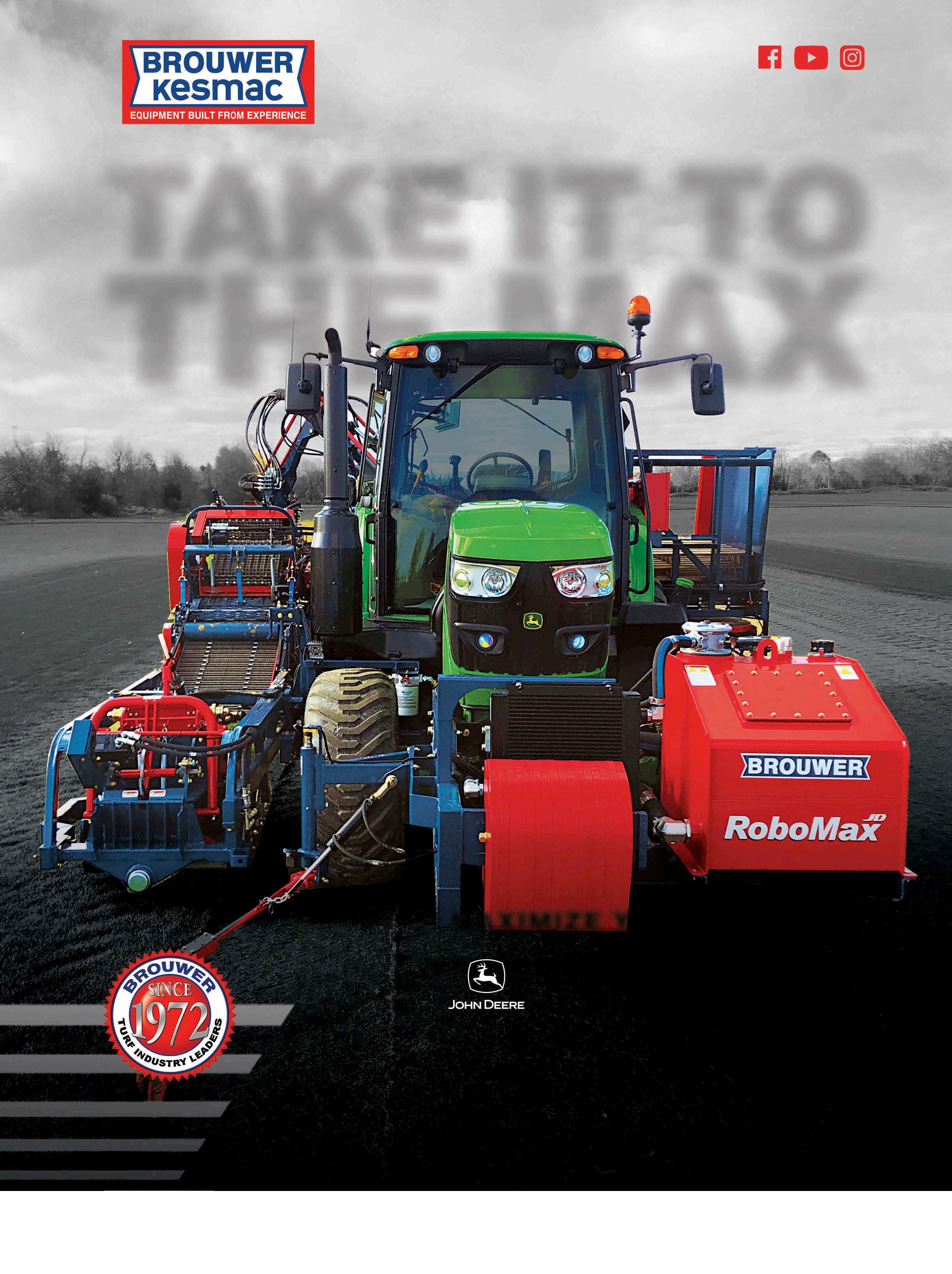
4 minute read
Launching TPI’s Leadership, Innovation, and Technology Committee Series
By Diane Mischel
Stemming from a desire to engage and involve up and coming members and attract new members to Turfgrass Producers International (TPI), the executive board recently formed the Leadership, Innovation, and Technology (LIT) committee. The committee first met in April. The inaugural LIT committee members are Erin Wilder of Sod Solutions; Kelsey Sandbothe of SelecTurf, Inc.; Jack Karlin of the Turfgrass Water Conservation Alliance (TWCA); Adam Russell of Mountain View Seeds; Sarah Nolte of Blue Grass Enterprises; Clark Bell of BioGrass; Diane Mischel of DeBuck’s Sod Farm; Suz Trusty of Turf News; and Allie Shriver representing TPI. This crew really hit the ground running from the very first committee meeting. A new year-long leadership small group experience program is in the works and will kick off in February at the TPI International Education Conference in San Diego. Details and applications will be released in the coming months. This new column in Turf News will tackle researching and sharing new technology and innovation concepts. The TPI board is committed to bringing relevant content and valuable programs to its members. Reach out to any committee member to share an innovative practice or new technology you are utilizing at your farm or operation. Unmanned aerial vehicles, typically known as drones, are not new (military utilization started in the mid-1800s) but technological advances in the twenty-first century reduced cost and improved commercial applications to bring drones to the masses. Recreational drone usage and registration skyrocketed in the first part of the 2010 decade, while commercial permits lagged due to uncertainty in the Federal Aviation Association (FAA) regulations. In 2016, FFA passed the Part 107 rule which clearly defined commercial drone requirements. The FAA went from issuing about 13 commercial permits total over the prior ten years to issuing thousands of commercial permits annually. The process to become a commercial drone operator involves learning the rules, passing a certification test which is valid for two years, and registering your drone with the FAA, which costs $5 and is valid for three years. An updated rule passed April 21, 2021, that allows drone pilots under Part 107 to fly at night and/or over people or moving vehicles without additional waivers. Visit FAADroneZone.faa.gov to learn more or start the registration process. Some of the basic uses for drones at a sod farm involve aerial camera scouting and marketing videos. Many available drones have GPS and flight path programming capability that allow a farm manager to set up a scouting schedule daily or weekly to track field changes in real time and save valuable personnel hours in the process. The data collected allows the manager to quickly narrow down what areas of the farm need an on-site evaluation and corrective measures. Different camera technologies can take this from a basic level up to in-depth readings with visual, thermal infrared, multispectral, and additional sensors. Drone footage can be a valuable marketing asset to showcase your farm to potential customers. Consumers that are long removed from any farming activity marvel at the size and scope of farming operations and the technology we are utilizing. The sky really is the limit when it comes to more sophisticated agricultural uses with drones. Agricultural specific drones are capable of spraying crops, capturing plant counts, taking soil temperature and moisture readings, or measuring nitrogen content of the leaf canopy. Fixed winged drones are best suited for covering large areas quickly and can handle the weight of several sensors, while quad-copter style drones are more precise and have the most maneuverable flight options. If all this technology sounds daunting to tackle yourself, many national and local agriculture service providers are adding drone scouting to their service options. Gaining knowledge about drones can help you navigate the world of precision agriculture, whether you go all-in with a highend agricultural drone package with software for in-house use, take the middle road with one or two less expensive drones with a camera or two, or get your feet wet by hiring drone surveying or scouting services. hiring hiring
Chris Roquemore (Patten Seed/Super-Sod) and Dr. Jing Zhang (University of Georgia) prepare to fly over dormant, overseeded, and painted TifTuf bermudagrass with three different drones and sensors during early February 2019 to compare results. This photo was provided for the article, “Drone Use in Sod Production,” which appeared on page 42 of the March/April, 2019 issue of Turf News.
Diane Mischel is owner of DeBuck’s Sod Farm, Inc. in Davison, Michigan, and a member of the Turfgrass Producers International Board of Trustees. Contact:office@debucksodfarm.com.
















